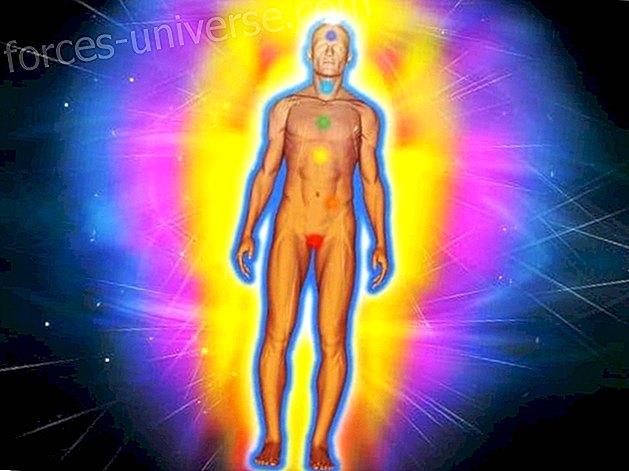
Among the most suggestive legendary scenarios about Jesus of Nazareth is the one that argues that in his youth, apart from being in Egypt, he would have spent some years in India. The author of this report has traveled to the Hemis monastery in Ladakh (India) to investigate the alleged existence of these documents.
The ancient Hemis monastery in Ladakh, rebuilt countless times due to the frequent earthquakes that shake the valleys and mountains of the Himalayas, contains in its library Buddhist prayer books and ancient scrolls. In these millenary archives we find writings on exorcisms, communication with superhuman beings, formulas to combat demons and dark hosts of other dimensions, treaties on life in other worlds, doctrines that deal with the purity of Light and the Illumination. And some authors argue that they also retain documents that would take the assumption of the passage of Jesus through Ladakh and the Himalayas.
The ignored youth
After the flight to Egypt from the Holy Family from Palestine, which Matthew recounts, a theme that does not appear in Mark, the oldest gospel, nor in John, which also includes a tradition Very close to the days of Jesus, the canonical gospels tell us nothing about his childhood and youth.
It could be deduced from Mark's account that he did not leave Palestine. But from his childhood the gospels only collect circumcision and the episode of his discussion with the doctors of the Law in the Temple, when he was twelve years old (Luke). In this sense, Jesus' stay in Egypt that Matthew picks up is a possible historical scenario, but that cannot be considered safe. Especially if we think that this Flight from the Holy Family is attributed to the slaughter of the innocent, ordered by Herod the Great, a fact that all historians consider legendary.
However, the trip to Egypt also appears in some apocryphal and in the Coptic tradition. According to these sources, in his youth Jesus would have made a pilgrimage to Lower and Upper Egypt. The Coptic monasteries of Wadi El Natrum and Al Moharrak would have been erected at key points of their itinerary. The fact that tradition identifies a sacred tree of the Nile religion (the tamarind) as one of the places in Egypt where the Holy Family would have rested, could be an indication that we are facing a symbolic journey that alludes to the roots of the religion of Israel and the royal Davidic lineage. But the truth is that there are no data that allow us to know what Jesus did or where he lived before beginning his teaching in Galilee, two or three years before being crucified.
How could it be otherwise, these lost steps of Jesus became a reason for speculation and legends for all tastes. And one of the most suggestive is that which states that he traveled to India, where he would have completed the training acquired in Egypt.
The hypothesis of a trip from Jesus to India, Tibet, Nepal and the Himalayas was formulated by Russian journalist and traveler Nicolas Notovich in the book The Unknown Life of Jesus. According to his version, the lamas made known some manuscripts that spoke of the prophet Issa (Eastern name of Jesus), describing him as a child born in Israel of poor and pious parents, "by whose mouth God speaks." Notovich maintains that he consulted a copy written in Pali language in the Hemis monastery (Ladakh), and that the original would be preserved in Lhasa, capital of Tibet and traditional headquarters of the Dalai Lama.
Always according to Notovich, Jesus would have studied the sacred Buddhist and Hindu texts and spent long periods in the holy cities of Benares and Rajagrhiba, among other locations in India, Tibet and Nepal.
In 1929, the Hindu Swami Abhedananda published an alleged Bengali translation of this source, although with some differences. These could be because you had access to another copy. In his Diary, the famous Russian mystic artist Nicholas Roerich cited several fragments very similar to those collected by Notovich in his book, but from another source. His son Jorge Roerich defended his authenticity. He was also endorsed by pianist Elizabeth Capari. This woman maintained that during a trip to Hemis in 1939, a lama would have shown him some scrolls, stating: This book says that his Jesus was here.
The tomb of Jesus?
But the legends of a link between Jesus and India do not only refer to his formation during his youth and his alleged preaching against the caste system. In his book Jesus lived and died in Kashmir, Andreas Faber-Kaiser held 30 years ago that he would have been saved from the crucifixion, exiling himself in Kashmir, where he would die and be buried. In this area there is a rich legendary tradition, which includes a mythical tomb of Jesus (the Rozabal), alleged descendants of him and even some places associated with his presence, such as Jesus' meadow. However, we must warn that it is a region in which Jewish colonies existed for several centuries before Jesus, an active trade with the Middle East and where there is also a supposed tomb of Moses. And all these are favorable factors to stimulate fantasy and the spread of legendary traditions.
In any case, these sources, severely questioned by the absence of documentary base, affirm that Jesus would have crossed the lands of Syria, Iraq, Iran, Afghanistan and Pakistan to India, source of the mystical knowledge of Vedas and the Upanishad, for later continue towards the valleys and mountains of the Himalayas through precisely Ladakh, where the Hemis monastery is located. After touring Tibet and part of ancient China, he would have returned to Palestine on a shorter route.
According to this theory, the keys to the wisdom of Jesus would therefore be placed in two emblematic points of the universal initiatory tradition. On the one hand, ancient Egypt, and also the doctrine of Light and Darkness of the Persian religion of Zoroaster. On the other, the ancient knowledge of the Hindu pantheon, with its myriad of gods and energies, and Buddhism, together with the Jainist Mahavirism of India and the ancient religion of the Himalayas, animist and powerful vibrations, such as those of Bon-po. Finally, I would have also known the philosophy of ancestral China. When Jesus returned to Palestine to free the body (of Roman domination), and soul of his blood brothers (from his ignorance), he would have completed his initiation, becoming the Christ: the great Enlightened One of God.
It is in the context of this image of Jesus that the supposed document that would be jealously guarded in the Hemis monastery, 45 kilometers from Leh, capital of Ladakh, acquires special importance.
This is the highest region of inhabited India. It comprises four main mountain areas: the Great Himalayas, Karakoram, Zanskar and Ladakh itself. And he was never isolated. Through centuries and millennia, it was the obligatory Silk trade route, the itinerary of the long caravans that crossed India and Central Asia to China and the Himalayas, with its colossal mountains, valleys and deserts.
The Indus Valley occupies a large part of the area around Leh and the many monasteries that are scattered among rocks and trees, in elevated territories, frequently protected by colorful natural barriers.






